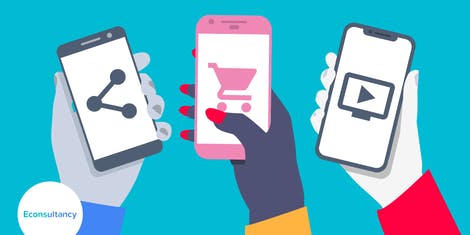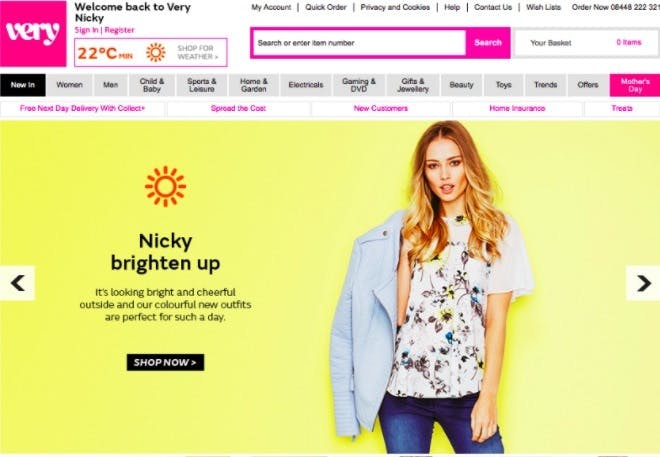Convinced by the merits of this approach, other brands may try to emulate it. But how many do so successfully? A recent study we conducted at Pure360 suggests the tactics commonly used to implement personalisation may be too basic to improve results.
In this article, we assess the current state of personalisation and discuss seven key principles that you can use to build a smarter strategy.
Learn more
Basic personalisation fails to engage
When it comes to implementing personalisation, many brands still rely on basic tactics. But the following results suggest this is failing to make an impact with consumers. Our study shows that:
- Only 8% of consumers are encouraged to engage with a retail brand because of digital marketing that addresses them by their first name – so if a brand were to personalise an email with someone’s name (as many brands do) this alone wouldn’t be enough to encourage them to read or take action from it.
- Only 7% are likely to engage with a birthday themed email – again, this suggests that a brand’s knowledge of someone’s personal information isn’t enough to motivate the reader to take action.
However:
- 50% of consumers are likely to engage with a brand when they receive an interesting offer.
In summary, this study emphasises a marketing fundamental: relevance is key. Addressing someone by their first name may appear personal but if the accompanying message doesn’t address the customer’s needs then it’ll fail to do its job. Brands who keep their customers at the heart of everything they do will be far more successful.
So how can brands build their personalisation strategy from here?
Intelligent personalisation should be a business priority
Firstly, it’s important to review the business case for next-level personalisation. Your business should make it a priority because it can:
- Increase conversion rates: According to Econsultancy’s Conversion Rate Optimisation Report in 2017, 93% of companies see an uplift in conversion rates using personalisation. Contextually relevant marketing messages makes it more likely that people will buy from you.
- Increase average order value: Cross and upselling increases how much people spend in each transaction. Back in 2013, online retailer, Notonthehighstreet.com boosted its average order value by almost a third after introducing personalised recommendations.
- Increase customer lifetime value: Personalisation can improve customer experience and entice customers to spend more at each stage of their journey. In a 2014 survey, Econsultancy found 64% of companies rated customer experience as the best tactic for improving customer lifetime value, followed by better use of data and personalisation.
- Improve marketing ROI: Personalising marketing on each channel can increase the chance of conversion when customers reach your website, delivering better cross-channel ROI. According to McKinsey, personalisation can increase the efficiency of marketing spend by 10–30%.
Personalisation is an investment in creating better customer experiences. Keeping this at the forefront of activity will ensure brands are delivering real value to customers. It just so happens that increased revenue is a by-product of this activity.

What makes personalisation intelligent?
Here are seven principles that underpin a successful personalisation strategy:
1. A seamless experience
Modern customer journeys are rarely linear. To ensure personalisation enhances (rather than disrupts) these journeys, it must work across devices and channels. It can’t sit in silos.
To build a seamless experience, your strategy needs to be:
- Cross device: Consider how you will personalise across every device your customers may be using in their daily lives.
- Cross channel: Reflect consistent messaging across channels, so there are no disconnects as people move between them.
- Physical and digital: Seamless online personalisation needs to account for in-store transactions too. Having access to this data means you’ll be able to avoid pitfalls like marketing a product to someone who was looking at it via your website but then purchased it in store.
2. Contextual relevance
To personalise in a way that is relevant, you need to understand the context of your products and how this fits with the context of your customers.
Dear Amazon, I bought a toilet seat because I needed one. Necessity, not desire. I do not collect them. I am not a toilet seat addict. No matter how temptingly you email me, I'm not going to think, oh go on then, just one more toilet seat, I'll treat myself.
— Jac Rayner (@GirlFromBlupo) April 6, 2018
Customer context includes:
- Demographics: Understanding basic demographics will determine who has a need or desire for certain products or messaging.
- Location: Geographic location can affect which offers are relevant.
- Commuting, working, relaxing: What a person is doing right now affects their mindset and what they’re looking to buy.
- Time of day, day of week: This helps you frame messaging. A “Friday feeling” is quite different from the “Monday blues”.
- Season: Weather and time of the year can greatly impact buying behaviour.
- Customer journey position: What you offer a first-time buyer may be very different from a repeat purchaser.
- Satisfaction: If someone has made a negative review recently your tone of voice should be humble and you’ll want to think about the regularity of marketing communications.
The context of your products or service includes:
- Motivation: Is this a product someone buys out of desire or necessity?
- Price: If you sell high-ticket items, for example, how often can you share this message with your target audience? Do they have the money to make regular purchases?
- Frequency of purchase: Promoting a product every month that only gets bought once every few years is misspent effort.
- How they are used: Think about the role your product or service plays in people’s lives as this will be key to how often they want to hear about it.
- Likelihood of repeat purchase: If something was bought as a gift it might not be bought more than once. But if it’s something that needs replenishing such as pet food, consider when to target them again to encourage a repeat purchase.
3. Behavioural based personas
Rather than targeting people based on demographic personas, consider how people behave and what this tells you about what might engage them.
Demographic personas consider things like age, gender or marital status. These qualities are static and may not always influence how people buy, or why they buy. Behavioural personas are richer and more meaningful. They tell you who does what, when they do it, and why.
Understanding this gives you clues as to what might drive them to conversion. This allows you to create conversion strategies that target each behavioural-based persona.
Behavioural factors these personas could be built on include:
- customer journey stage
- customer lifetime value
- frequency of purchase
- satisfaction
- marketing engagement
- price sensitivity

Behavioural based personas
4. Real-time messaging
If you’re not personalising in real-time, you probably aren’t personalising. Personalisation should enable your brand to react in a split second—as if you were talking to a customer face to face.
To get this right you need personalisation technology that can understand, react to, and optimise customer journeys in real-time. It does this by observing real-time behaviour, considering historic behaviour, and drawing on the wisdom of the crowd. This enables it to deliver up the right message, offer, or experience at the right time.
So as an example scenario we have an online customer who is looking at shoes after purchasing a formal dress. The technology will determine which third product is most frequently bought with formal dresses and shoes so it can cross-sell it to the customer when they check out.
5. Dynamic content
Closely connected to the point above, intelligent personalisation needs to be dynamic. Machine learning decides what the best content for each customer is based on:
- purchase history
- preferences
- demographics
- browsing and buying behaviour
- customer lifecycle
This makes one-to-one marketing a reality. For example, if someone was a frequent purchaser, the best content to insert dynamically might be product recommendations. Whereas if they were yet to make a purchase, it might be a discount.
Next-level dynamic personalisation could even incorporate elements like the weather. Weather-based personalisation is super relevant and can drive people to browse and buy weather-appropriate products.

Weather-based personalisation via Very
6. Think ‘how’ not just ‘what’
Intelligent personalisation does not just consider what to personalise, but how to personalise it. For example, Netflix has started to personalise the artwork used to promote programmes based on people’s viewing tastes. So if you watch a lot of romance, the artwork you see when Good Will Hunting is promoted will be much more couple oriented than if you were into comedy.
We can look to travel for another example. If you were selling cheap flights to Orlando to a family, you would use very different imagery than if you were selling them to an older, childless couple who are looking for a romantic getaway.
7. Be invisible
Having the technology to implement intelligent personalisation sometimes tempts marketers to show off each and every way they can track users around the web. This is not the aim. To avoid creeping your customers out, ensure that your personalisation is not noticeable. It should be an integral (but invisible) part of the customer experience.
The best personalisation is that which enhances the customer experience without customers actually questioning how or why. Your tactics should go unnoticed and create an experience that feels effortless. Keep your eyes on the goal of adding value to your customers and making their lives easier. Increased revenue should naturally flow from this.
Takeaway
Basic personalisation tactics are no longer enough to engage customers. Advanced personalisation is the best way to predict and shape customer behaviour and it is possible for all brands.
Following the seven principles of intelligent personalisation and looking at the data you’re already sitting on will help you take your strategy to the next-level. From here, ensure your goal is based on improving customer experience and you’ll see increased profits as a natural by-product.

Comments